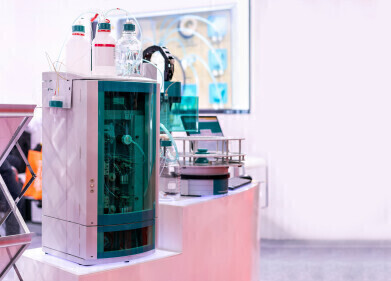Ion chromatography (IC)
Amino Acids in Breast Milk - Chromatography Investigates
Oct 29 2019
It is widely recognised that breastfeeding is the best way for babies to start feeding. World Health Organization guidelines suggest that breastfeeding should be the exclusive food of choice for infants up to six months old. It is not only beneficial for babies, with the benefits for mothers including a reduced risk of ovarian and breast cancer as well as a portable, always on supply and cheap means of providing nourishment for hungry babies.
But in a recent paper published in the journal Nutrients, researchers have found differences in breastmilk that you might find surprising. The research suggests that boys get different amino acids in their milk to girls and fast-growing children also get different free amino acids. Let’s take a look at the best food for babies and see how chromatography helped the researchers make these findings.
Breast milk is best
Breast milk is a complex mix of carbohydrates, fats and proteins - but the whole is much more than these simple macronutrients. It contains millions of live cells such as white blood cells that boost a baby’s immunity and stem cells to help organs develop. There are also over 1000 proteins to help junior develop a strong immune system and to develop neurons in the brain to help cognitive functions.
The magnificent mix that is breast milk is completed by:
- Oligosaccharides that act as prebiotics helping babies to develop good gut bacteria,
- 40 different enzymes that help a baby’s digestive and immune system,
- Vitamins and minerals to support growth and healthy teeth and bones,
- Long-chain fatty acids to help baby’s nervous system, and
- Thousands of mRNA to help regulate gene expression and keep baby healthy.
The protein a mother produces is made from amino acids - just like all proteins. But it is differences in these amino acids that the team behind the paper in Nutrients think might be different depending on whether baby is a boy or a girl.
Gender-specific amino acids?
The team collected breast milk samples from 65 lactating mothers over a period of two years. The milk was collected at different stages of the infant’s development - at one week old (colostrum), two weeks old (transition) and between 2 and 4 months old (mature). These correspond to the three stages of breast milk production which changes as a baby develops.
The team determined the free amino acid levels using cation-exchange chromatography - the use of cation exchange chromatography is discussed in the article, Development of a novel combined IEX-RP chromatographic process for the purification of bivalirudin. The report that they found higher concentrations of some amino acids in milk produced for makes and for faster growing infants. They offered no explanation as to why.
But the research shows that we are all different and have different needs. Even at birth.
Events
Apr 22 2025 Kintex, South Korea
Analytica Anacon India & IndiaLabExpo
Apr 23 2025 Mumbai, India
Apr 27 2025 Portland, OR, USA
May 11 2025 Vienna, Austria
May 18 2025 Tempe. AZ, USA














